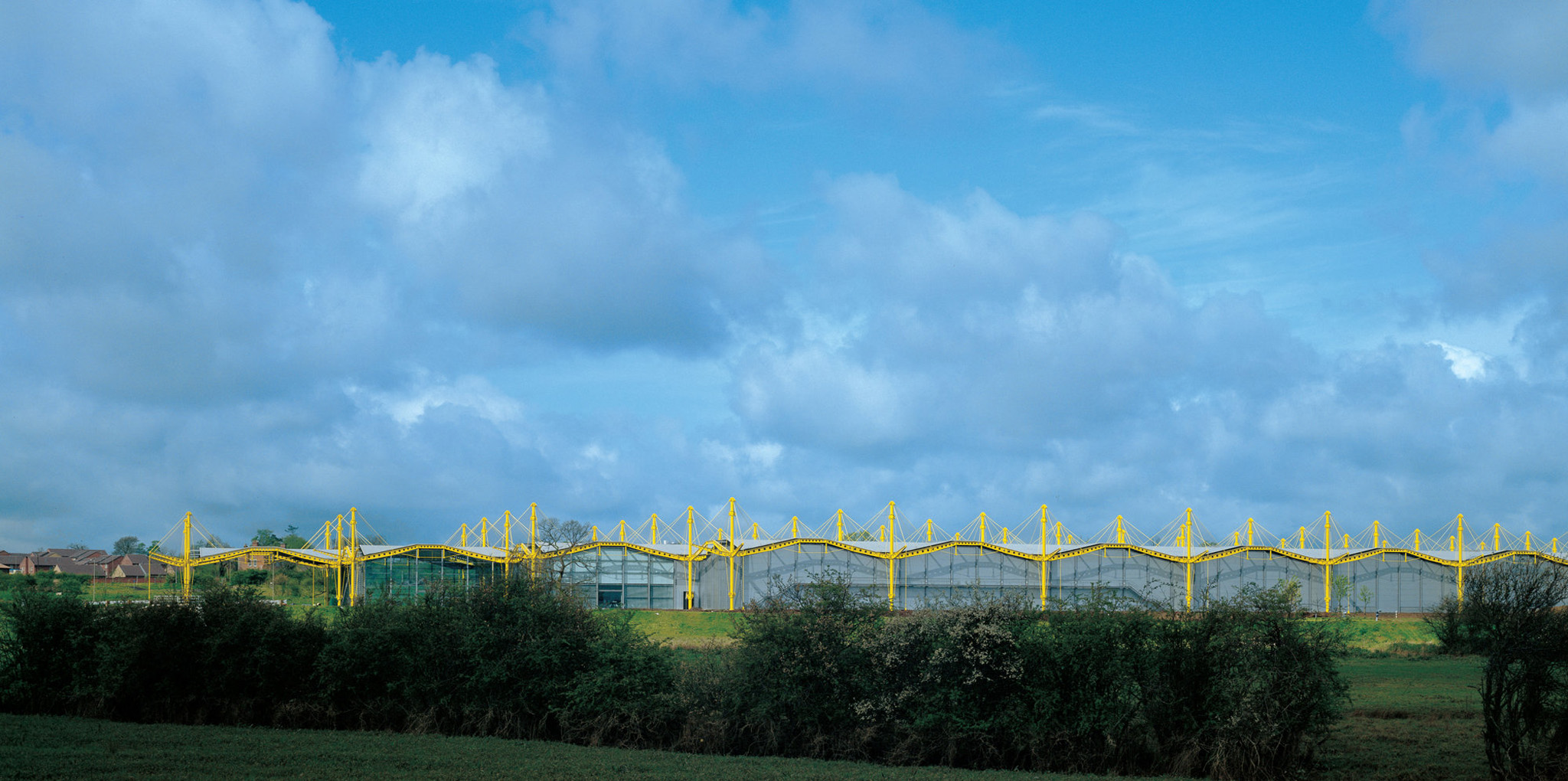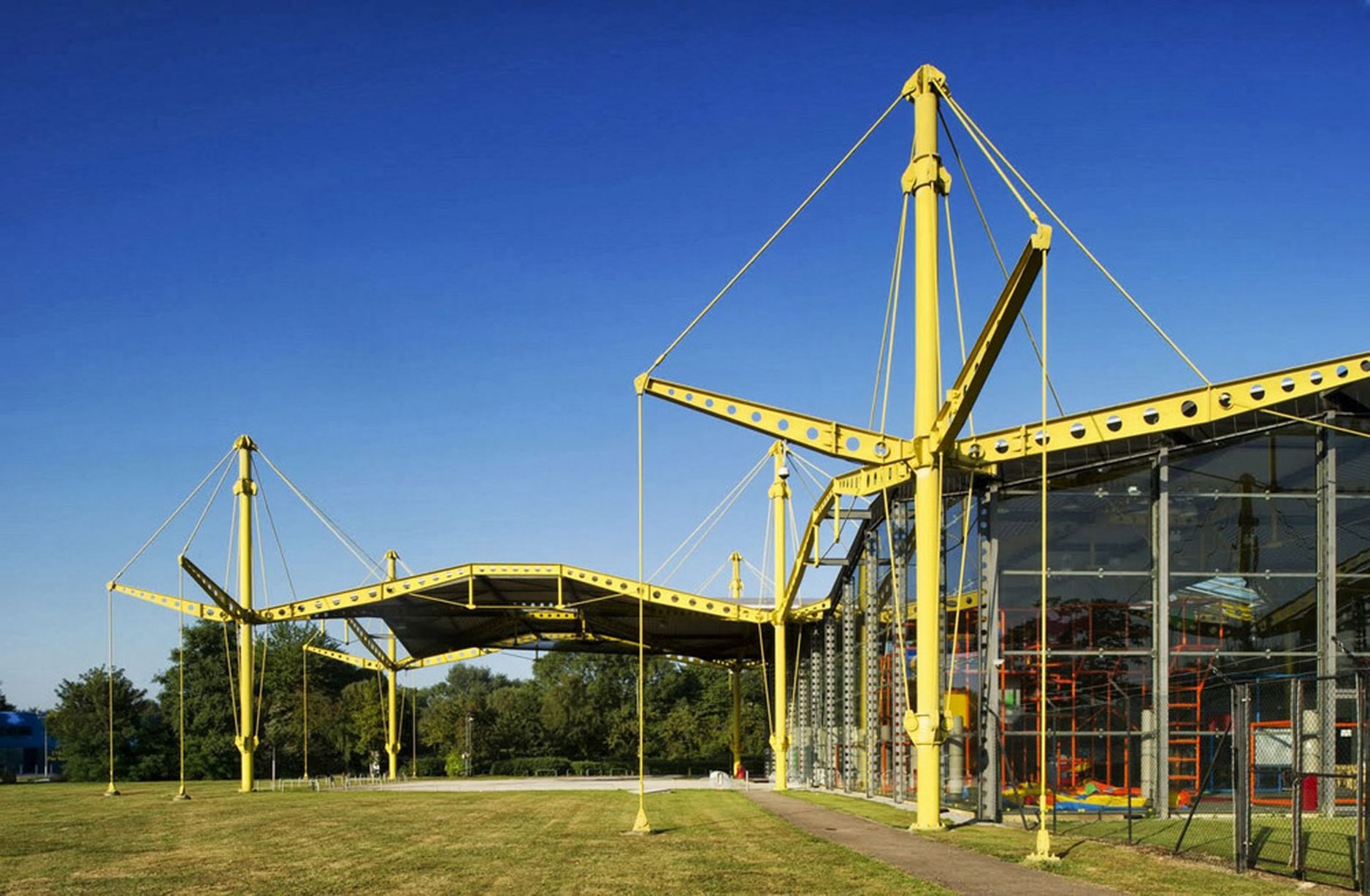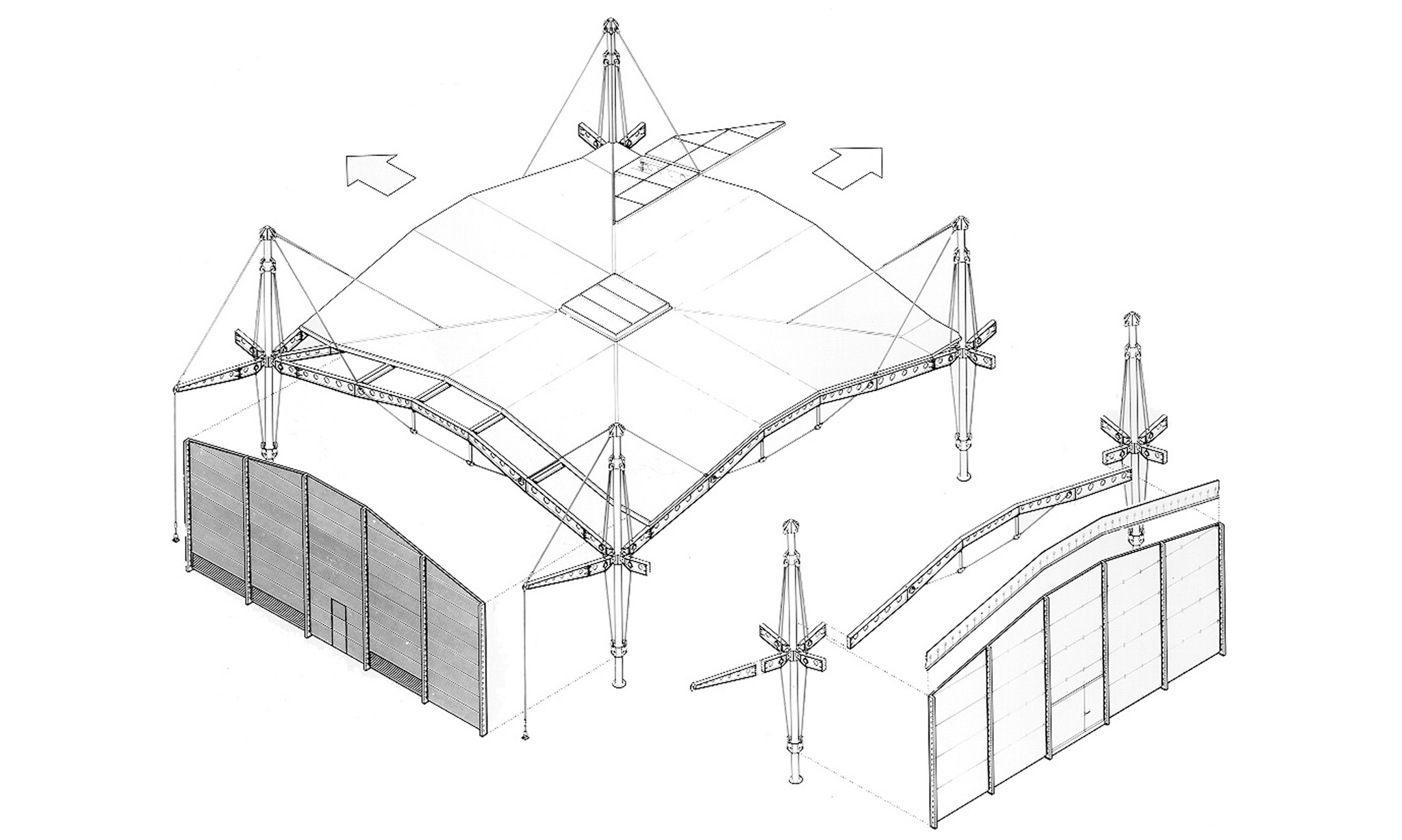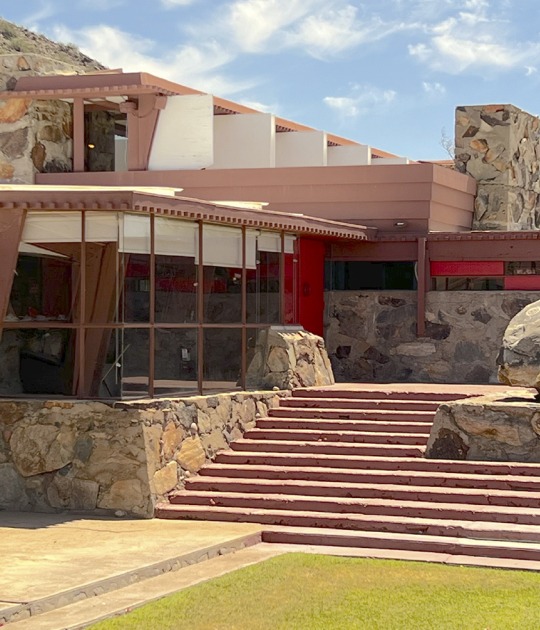The project will include a roof refurbishment, repair, and redecoration of the steel frame and cladding. Work on the building is expected to be completed in May 2024.
Renault required a flexible space with large, open spaces for the industrial warehouse racking and storage, reconfigured regularly throughout the life of the building. The 25,000 sqm building has an extremely distinctive profile with a roof supported by 59 bright-yellow masts and perforated steel beams.
In total, the structure is made from 42 square modules that are each 24 meters by 24 m. Each module has a PVC membrane roof stretched across a grid of arched steel beams that are held up by ties connected to masts at their corners.

Renault Distribution Centre by Norman Foster. Photograph by Richard Davies, Courtesy Foster + Partners.
A total of 36 of these modules, arranged on a 9x4 grid, enclosed 20,000 sqm of warehouse space. A further three modules were built to contain a training school, workshops, offices, and a staff restaurant.
Foster's studio designed also the majority of fixtures for Renault including the warehouse storage units and a range of office furniture.
Glass-topped tables, which were developed for the studio's offices, were modified for the distribution facility's offices, restaurant, and reception. The tables were developed by Italian furniture manufacturer Tecno and placed on sale in 1986, they are still in production.
In 2013 the structure was given Grade II* listed status by English Heritage for its innovative industrial design.
 Renault Distribution Centre by Norman Foster. Photograph by Richard Davies, Courtesy Foster + Partners.
Renault Distribution Centre by Norman Foster. Photograph by Richard Davies, Courtesy Foster + Partners.
Project description by Foster + Partners
The Renault Centre has been described as the practice's most playful structure. However, its development owes much to earlier, perhaps more reticent schemes for clients such as Reliance Controls and Fred Olsen, which delivered inexpensive, flexible buildings to tight schedules. The Centre was commissioned as the French car manufacturer's main UK distribution facility. In addition to warehousing, it includes a showroom, training school, workshops, offices, and a staff restaurant. The notion that good design pays has almost become a cliche, but in this case, it is quantifiable: on the strength of the design, supportive local planners increased their site development limit from 50 to 67 percent, allowing a floor area of 25,000 square meters. This is housed within a single enclosure supported by brightly colored tubular masts and arched steel beams, forming a striking silhouette within its surrounding landscape.
The structural system that repeats itself to form this external outline is based around a 24 by 24-metre bay a much larger than usual planning module developed so as to maximise the planning flexibility of the internal spaces. This expansive horizontal span is combined with an internal clear height of 7.5 meters, allowing the Centre to accommodate a range of uses from industrial warehouse racking to its subdivision into office floors. Enveloped by a continuous PVC membrane roof, pierced by glass panels at each mast, the building is also stepped at one end, narrowing to a single, open bay that forms a porte-cochere alongside a double-height gallery. Primarily a showroom - as signified by suspended car body shells - the gallery was used by Renault as a popular venue for arts and social events, encouraging wider community involvement in the building.

Axonometry. Renault Distribution Centre by Norman Foster.Image courtesy Foster + Partners.
As much as its internal spaces, however, it is the building's almost festive Renault-yellow skeleton that gives the Centre such an identifiable character. Significantly, this created such a memorable image that the building, alone among the company's facilities, did not need to carry the Renault logo. In fact, it is so closely associated with the brand that for many years Renault used it as a backdrop in its advertising campaigns.
























![10 Architecture Studios Led by women [XII] 10 Architecture Studios Led by women [XII]](/sites/default/files/styles/mopis_home_news_category_slider_desktop/public/2025-03/metalocus_10-arquitectas-xi_01b.jpg?h=3b4e7bc7&itok=KFjWtS5J)









